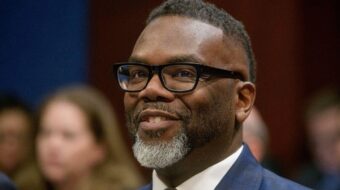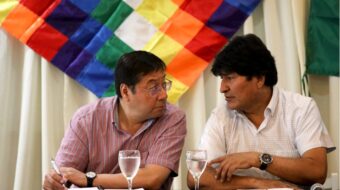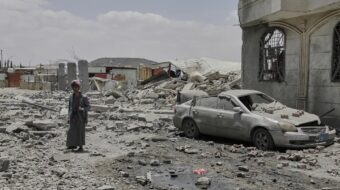
Cuba’s struggle goes beyond overcoming a state of siege and surviving the fall of the Soviet bloc. It ends neither with health care, schools, and food for all, nor with the battle of ideas. There’s more to be done.
Problems of inadequate housing and woeful public transportation have not gone away. The nation must deal with the corruption, special privileges and divisions that came in with capitalist methods used during what the Cubans call the “special period.” Increasingly severe hurricanes and continued drought add to the mix. But foremost among Cuba’s challenges is the specter of an energy shortage.
Cuba’s economy has improved. It expanded by more then 9 percent during 2005. Unemployment is down to 1.9 percent. The balance of trade was positive for the first time in 15 years. Trade compacts with Venezuela and China have stimulated mining and refining ventures, brought in oil and more consumer goods, and spurred banking services. Trade with China jumped 41 percent from 2004 to 2005.
Cuba’s financial structure has a new stability. The inflow of dollars is down 50 percent in favor of alternative hard currencies. Savings are up, and short-term foreign debt is being converted into long-term obligations. Currency reserves in the state bank have increased, as has liquidity, safety and control.
On Jan. 14, 12 relatively cheap, fuel-efficient locomotives arrived from China. The country’s transportation services will soon take possession of the last of 1,000 new Chinese buses. One million energy-efficient Chinese television sets are being distributed throughout the island, along with energy-efficient electric refrigerators and electric cooking devices. Many of these will end up in new housing, which the government is building at the rate of 100,000 units per year.
But the major chore is to cut down on energy waste and to build up the quantity and efficiency of the nation’s power generating capacity. In speech on Jan.18 in Pinar del Rio, President Fidel Castro proclaimed 2006 the “year of the Energy Revolution.”
That province is seen as a model for the nation. The changeover to new electric generating plants is almost complete there, and 95 percent of the households are using efficient electrical appliances. Castro credited the provincial Communist Party for ensuring cooperation among government bureaus. He praised the work of thousands of social workers and other young people who have gone house to house, delivering new electrical cooking equipment, promoting energy conservation and removing old appliances.
Pinar del Rio has gained 164,000 kilowatts in additional electrical generating capacity, and Cuba itself has upped its total by 2 million kilowatts. The annual savings from the new efficiencies is expected to amount to $1 billion nationwide.
There is a socialist way of doing things, Castro said in his speech. “We do not resolve a problem for one here or two there. The purpose of the revolution is to solve problems for everybody.”
On Nov. 27, 2005, Francisco Soberón, president of the Central Bank, basing his analysis on “today’s world scenario of no elasticity in the cost of hydrocarbons,” declared, “If in politics … we cry out, ‘Patria o Muerte!’ (country or death), in economy we could very well say, ‘Ahorro o muerte!’ (savings or death).”
For head banker Soberón, socialism makes all the difference: “The country has limited material resources … it must constantly determine priorities for the use of its resources, priorities that differ considerably from those of capitalist countries. … We prioritize expenditures to save the life of a child over the purchase of state-of-the-art cars for elite consumers or luxury buildings. … This is precisely why in Cuba fewer children die than in the rest of the Latin American countries.”









